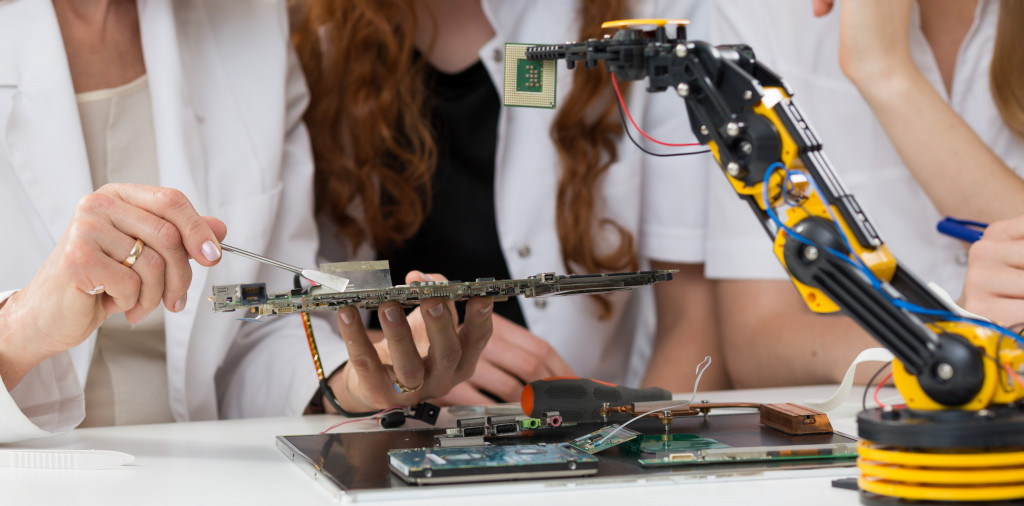- Imaging tools such as MRI, CT scans, and mini C-arms diagnose complex conditions like ligament tears or muscle injuries.
- Computer Assisted Surgery (CAS) is a minimally invasive surgery that uses 3D imaging and computer navigation to guide surgeons.
- Robotics can help reduce surgery time and tissue damage by performing precise surgical maneuvers guided by 3D models.
- Wearables can provide tailored exercises based on data collected from sensors and real-time feedback on progress and biometrics monitoring.
Healthcare, as an industry, has seen rapid development in recent years, and orthopedics has been no exception. At the forefront of this development is integrating new technologies into everyday practice. These technologies help to increase efficiency and accuracy, allow for better patient-physician interaction, reduce costs and help improve outcomes. This blog post looks at some of the most important technologies used in orthopedics today, helping to elevate medical care to a whole new level.
Imaging Tools
Imaging is an essential part of any orthopedic practice. These images are invaluable in diagnosis and treatment planning and provide valuable information about bone structure when dealing with complex fractures or deformities.
MRI or CT Scan
Traditional x-rays have mainly been replaced by newer imaging tools such as MRI or CT scans, which provide far more detailed images of soft tissues than conventional radiographs. This can be invaluable when diagnosing complex conditions such as ligament tears or muscle injuries, where the damage cannot be seen in a traditional x-ray.
Mini C-arm
The mini C-arm is a fluoroscopy machine that boasts superior mobility over traditional full-body machines without sacrificing image quality. It is ideal for operating rooms to guide joint replacements or fracture fixation procedures.
It also has applications beyond surgery — such as monitoring the progress of healing fractures or checking the alignment of prostheses — making it an incredibly useful addition to any orthopedic practice’s arsenal of imaging tools. However, this machine can be a costly investment. That’s why many professionals opt for a mini c-arm rental while saving enough funds to purchase one. Doing so can still provide them with the necessary imaging capabilities without the long-term commitment.
Ultrasound
Ultrasound is quickly becoming a major player in diagnostic imaging due to its portability, affordability, relative safety (compared to other ionizing radiation techniques), and ability to generate images with remarkable clarity even at depths not accessible with traditional radiographs. Its accelerating adoption rate means ultrasound machines should soon become commonplace in every orthopedic practice regardless of size or specialization.

Surgery
Orthopedic procedures are becoming increasingly complex and require precise navigation to ensure successful outcomes. Luckily, today’s technology can help orthopedic surgeons achieve better results than ever before.
Computer Assisted Surgery (CAS)
CAS is a minimally invasive surgery that uses a combination of 3D imaging and computer navigation to guide surgeons through precise paths during the procedure. This removes the guesswork from the equation and can reduce surgery time, minimize tissue damage, and improve accuracy. And since the navigation system can detect the slightest changes in patient anatomy, any adjustments to the operating field can be made in real time.
Robotics
Robotics is revolutionizing surgery both inside and outside the operating room. From robotic arms carrying out precise surgical maneuvers guided by 3D models based on scans taken pre-operatively to AI-driven robots performing mundane tasks like retrieving equipment from another room without human assistance, all fall directly within robotics’ purview.
Robotic systems provide highly accurate feedback about the joint position during minimally invasive surgeries (such as arthroscopies), allowing for tight tolerances when it comes to tissue repair or reconstruction while vastly reducing recovery times by avoiding large incisions altogether.

Wearables
Wearables are a relatively new development since they only became widely available within the last decade. Their primary uses lie within physical therapy, where they provide tailored exercises based on data collected via sensors placed onto a patient’s body (such as muscle tension). Some types of wearables can even predict how likely a patient is to relapse and adjust the exercises accordingly.
Smart Watch
The most popular type of wearable is the smartwatch. These watches can track a patient’s vital signs, heart rate, and other biometrics, enabling physicians to monitor their patients’ progress from afar. They can also provide real-time feedback on how well they’re doing and alert them if any changes in their health are detected.
As the world of orthopedics continues to evolve and develop, it’s important to stay up to date with the latest technology. By doing so, orthopedic practitioners can ensure they are providing the best possible care for their patients and improving outcomes. With these advanced technologies, they can increase accuracy, reduce costs, and improve the efficiency of their practice.

